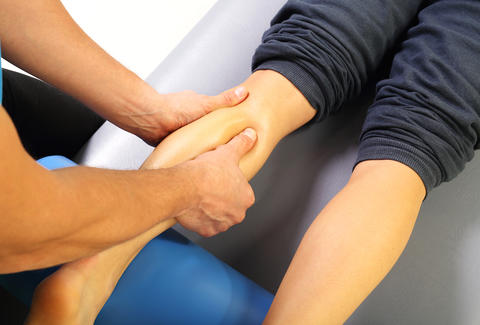How to Avoid Deep Vein Thrombosis

Deep vein thrombosis (DVT) occurs when a blood clot forms in the deeper veins of the leg and other parts of the body. It is important to restate that blood clot is a serious indicator of medical emergency. The unseen deep veins in the leg carry huge volumes of blood through the calf and thigh muscles. According to the health information resource Patient.info, the DVT problem escalates when a clot on the walls of the veins leads to prolonged discomfort and blood clotting in the lungs or Pulmonary Embolism (PE). The discomfort and swelling of the calf mostly arose from post-thrombotic syndrome. DVT can affect anyone, even though the people most at risk include:
- Pregnant women
- Post-operative care patients
- Persons with the following conditions; cancer, obesity, heart failure, and pneumonia
The risk of DVT is also higher in people who’ve previously had Pulmonary Embolism as well as those with a family history of the disease. According to an excerpt in Reader’s Digest, up to 600,000 people develop DVT each year in the US while 100,000 die from DVT induced Pulmonary Embolism during the same period. Common signs of DVT in the leg include warmth to touch, swelling, emergence of red and blue discolorations and pain similar to that caused by pulled muscle. People with PE usually experience chest pain, rapid heartbeat, shortness of breath and unexplained coughing. Below are 5 tips on avoiding chronic deep vein thrombosis as listed in the magazine:
1.Review your medicines constantly
Studies have shown that women who use prescription birth control pills have a high risk of getting blood clotting. The list includes estrogen laden medications and drospirenone based birth control pills. Following the revelations, the American College of Gynecologist has urged women undertaking hormone replacement therapy during post-menopausal stage to consider using patches in place of pills.
2. Understand your family history
The probability of an individual suffering DVT increases if close relatives have been diagnosed with the condition, a study conducted by a group of Swiss researchers has shown. In the widely published study, the risk of DVT increased by as much as 50-fold in people with two or more siblings with DVT.
3. Weight loss
Weight loss offers numerous health benefits that include lowering the risk of suffering DVT. This is especially true in women over 5 feet and men over 6 feet tall. For taller people, the heart has to pump blood to lengthy distances against the gravitational pull. If the pumping force is deemed inadequate, the flow of blood to the legs is greatly hampered, which in turn heightens the risk of blood clotting.
4. Keep moving
Staying in one spot for lengthy periods of time can easily lead to DVT. Doctors often encourage people with clotting issues to walk, raise and lower their heels in order to promote blood flow. The exercises activate the calf muscle, making it easier for blood to push upwards, thus minimizing the risk of suffering DVT.
5. Stay on the lookout when hospitalized
Studies show that as much as 60% of all DVT cases develop in people who have been recently hospitalized. The conditions blamed for the high DVT prevalence include illnesses that require lengthy bed rests, vein damaging traumas and surgical procedures that involve veins widening.